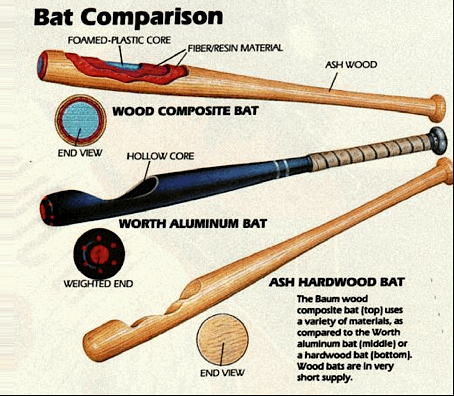 This weeks blog is written by Camille Dunn, PhD. Dr Dunn joined the Department of Otolaryngology—Head and Neck Surgery at the University of Iowa in 2003 where she is an Assistant Professor and the Director of the Cochlear Implant Program. She received her Masters and Doctor of Philosophy Degree from University of Nebraska-Lincoln. Dr. Dunn holds her Audiology license from the State of Iowa. She maintains her Certificate of Clinical Competence in Audiology (CCC-A) and is a member of the American Speech-Language-Hearing Association (ASHA) and the American Cochlear Implant Alliance (ACIA). She is a Principal Investigator on a NIH-funded grant exploring the mechanisms of electrical, acoustic, and A+E hearing that can mediate or impede successful communication in backgrounds of noise and can be modified by A+E speech processing. She is also an Investigator on a Department of Defense Grant studying cochlear implants in listeners with noise-induced hearing loss.
This weeks blog is written by Camille Dunn, PhD. Dr Dunn joined the Department of Otolaryngology—Head and Neck Surgery at the University of Iowa in 2003 where she is an Assistant Professor and the Director of the Cochlear Implant Program. She received her Masters and Doctor of Philosophy Degree from University of Nebraska-Lincoln. Dr. Dunn holds her Audiology license from the State of Iowa. She maintains her Certificate of Clinical Competence in Audiology (CCC-A) and is a member of the American Speech-Language-Hearing Association (ASHA) and the American Cochlear Implant Alliance (ACIA). She is a Principal Investigator on a NIH-funded grant exploring the mechanisms of electrical, acoustic, and A+E hearing that can mediate or impede successful communication in backgrounds of noise and can be modified by A+E speech processing. She is also an Investigator on a Department of Defense Grant studying cochlear implants in listeners with noise-induced hearing loss.
As a cochlear implant audiologist, we have rituals of providing good patient care to assure that our patients have the best possible outcomes with their cochlear implant. We provide thorough and realistic counseling prior to implantation and confirm that the patient and/or family understand what is expected of them following activation of the cochlear implant. We focus on making sure the recipient is scheduled for regular mapping appointments and verify that the recipient is making progress with their implant through laboratory speech perception tests. The bottom line is that we are passionate about what we do and feel a sense of pride when we can help a recipient hear more effectively.
Remarkably though, I often find myself identifying patients by their most recent speech perception score. How many of you can recite what your cochlear implant patient scored on a CNC word 1 or AzBio Sentence 2 test last week? I would wager that most of you can. Many times, I will look at the list of upcoming scheduled patient visits and see a name and quickly remember that they were the patient with the lower (or higher) than expected speech perception score at their last visit. At that moment, if it’s a higher score, I breathe a sigh of relief and move on to thinking about the patient with the lower than expected score. I desperately scan through my mind what else could be tried through their programming to help them get a 15% or even 10% higher score than their last visit. I worry though that at times, I get so immersed in my rituals that I forget that there is more to my patient than a percentage score. Does that speech perception score really reflect the benefit that the patient feels they are getting from their cochlear implant?
I am reminded of a time when a Lion’s Club member was visiting our department. As a bit of history, for over 35 years, the Lion’s Club has been a huge advocate of our mission to help people hear better through their annual donations to our Cochlear Implant Research Program. In fact, in 1983, the International Lion’s Club provided our department with seed money to inaugurate our Cochlear Implant Research Program which inevitably lead to our program being awarded the first of seven National Institutes of Health grants to study cochlear implants. When the Lion’s member scheduled his visit, he asked if there could be an opportunity for him to visit with a cochlear implant recipient. He was writing an article for the Lion’s organization and wanted to incorporate some information from the patient regarding how the cochlear implant had benefited him/her. At first thought, it seemed like a fantastic idea and told him I would reach out to some patients scheduled the day he had planned his visit to get their permission.
I scoured the calendar to find a patient who was scheduled over the one-hour time slot the Lion’s member said he planned to stop by the department. In my mind, I wanted to find a perfect patient who would exponentially praise the cochlear implant and gleam with joy about how it had changed their life. I wanted this Lion’s member to leave after meeting our patient with the same wholesome feeling people get after watching the viral online videos of a person connected with their cochlear implant for the first time.
The first patient that I came across was scheduled for their two-week postactivation appointment. That wasn’t a great choice as they might not yet be able to express how the cochlear implant had helped them. There was another patient coming in for a device consultation in preparation for the cochlear implant; and then there was a patient coming in who was scheduled for his 36-month annual follow-up appointment. This seemed like the most likely patient to meet with the Lion’s Club member. I glanced at the clinical notes written by the cochlear implant audiologist who had seem him last year. The report seemed pretty typical for an annual visit. Datalogging showed that the 76-year old patient was wearing his device approximately 14.1 hours a day; the microphone cover was changed and (T)hreshold and (C)omfort levels were adjusted only slightly.
Then, I reviewed the speech perception scores that were tested. My eyes grew big and I gulped when I saw that his CNC word score was 37% last year!
I was immediately concerned that this was not going to be the patient to “wow” this Lion’s member with how wonderful his cochlear implant had been for him. I looked at his preoperative CNC score and it had improved from 14%, but for all intents and purposes, this patient was still scoring as if he was a cochlear implant candidate. I knew at that point, I had two choices: 1) ask the patient if he would be willing to visit with the Lion’s member or 2) tell the Lion’s member that we didn’t have any patients available that day to visit. I ended up going with my gut feeling and after the patient checked in, I met him in the waiting room and asked him permission to meet with our visitor that day. The patient and his wife both said they would be happy to talk to the Lion’s member. In fact, they both were members of a chapter in their hometown.
When the Lion’s Club member arrived, I showed him around our department and pointed out and explained several different pieces of equipment used for our research endeavors that we have been grateful to be able to purchase through their donations. I also directed him to a shiny glass sign that hung from the ceiling that informed our recipients and candidates that perused our hallways that our cochlear implant research is sponsored in part through donations from the Lion’s Club. Finally, I knocked on the door to where our audiologist was seeing our patient who had agreed to meet our visitor. I introduced all the individuals in the room and told the Lion’s member a bit about the patient. The Lion’s member told the patient that he was there to see if there were other ways the Lion’s Club could support our cochlear implant program through donations. He then asked the patient how he liked his cochlear implant. In the back of my mind, I was wondering what the patient was going to say. After all, he so readily agreed to visit with the Lion’s Club member. The patient’s eyes filled with tears and with a shaking voice he told the Lion’s Club member that it had changed everything about his life. He said that he was able to have a conversation with his wife; he was able to once again feel engaged and a part of the world that was around him. His wife gently rubbed his back in support of his emotions as he almost couldn’t get the broken words out. I looked at the Lion’s Club member and with tears in his eyes, he told our patient that he was proud of the contributions that the Lion’s Club had made to our cochlear implant center because it helped people like him.
After they left, I took a step back to let sink in what had transpired during that whole moment. The most important thing that I learned was that I judged that patient by a word score and had no right to do that. I almost didn’t introduce him to that donor because I assumed that he didn’t feel that the cochlear implant had benefitted him because of his CNC word score. Had I ever taken the time to learn about the patient and ask him if he was getting out of the cochlear implant what he had hoped for?
With that, my colleagues and I decided to embark on a venture to try to understand the real-world benefits of a cochlear implant. Using an APP, we are collecting data from patients while they are in their real world through a methodology we call Ecological Momentary Assessment (EMA)3. We ask the patient to answer short questionnaires several times a day for approximately a week while in various active listening situations. Through this technique we are garnering a better understanding of how intervention such as a cochlear implant can affect feelings of anxiety and depression, effortful listening, speech understanding and other variables. We are also using personal patient-related factors to understand how age, personality, socio-economic status, and educational level might influence satisfaction and overall benefit with their intervention. My hope is that a tool can eventually be developed that will guide clinicians and patients with accessory use, aural rehabilitation, and counseling.
I would encourage clinicians to continue to collect speech perception measures because they can be a good diagnostic tool for the clinician to assess patient progress. I would also encourage the clinician to be careful not to make the same mistake that I did and judge a patient by their score. Think beyond the word and sentence score by using a validation tool such as the COSI 4 to initiate and guide conversations with your patient that might lead to ways to help your patient reach their potential with a cochlear implant.
REFERENCES
- Tillman TW, Carhart R. An expanded test for speech discrimination utilizing CNC monosyllabic words. Northwestern University Auditory Test No. 6. SAM-TR-66-55. [Technical report] SAM-TR. USAF School of Aerospace Medicine. Jun 1966:1-12.
- Spahr AJ, Dorman MF, Litvak LM, et al. Development and validation of the AzBio sentence lists. Ear Hear. Jan-Feb 2012;33(1):112-117.
- Wu YH, Stangl E, Zhang X, Bentler RA. Construct Validity of the Ecological Momentary Assessment in Audiology Research. J Am Acad Audiol. Nov-Dec 2015;26(10):872-884.
- Dillon H, James A, Ginis J. Client Oriented Scale of Improvement (COSI) and its relationship to several other measures of benefit and satisfaction provided by hearing aids. J Am Acad Audiol. Feb 1997;8(1):27-43.
**featured image courtesy Advanced Bionics






